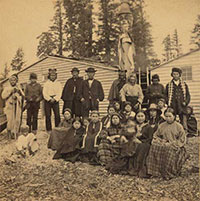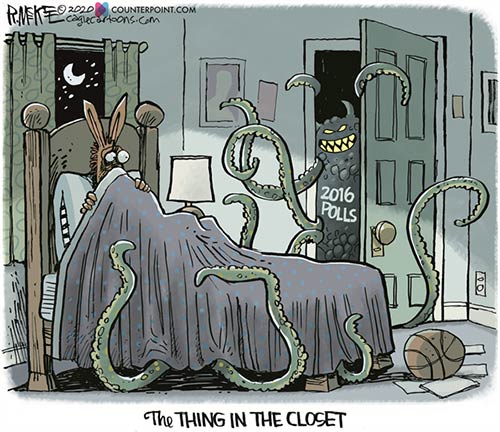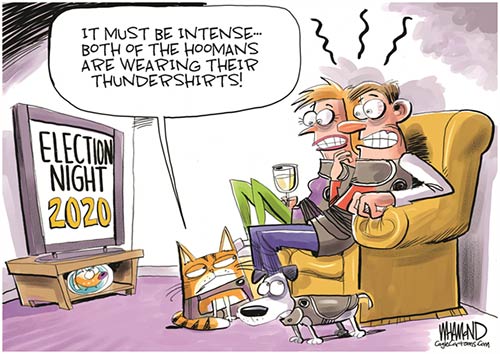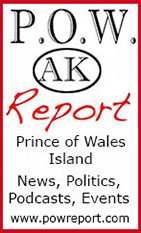














 Contact Contact 
 Webmail
Letters Webmail
Letters
 News Tips News Tips
 Copyright Info Copyright Info
 Archives Archives
Quick News
Search
 Alaska Alaska
 Ketchikan Ketchikan
 SE Alaska SE Alaska
Columns
- Articles
 Dave Kiffer Dave Kiffer
 Money Matters Money Matters
Historical
Ketchikan
 June Allen June Allen
 Dave
Kiffer Dave
Kiffer
 Louise
B. Harrington Louise
B. Harrington
Sports
 Ketchikan Links Ketchikan Links
Public Records
 FAA Accident Reports FAA Accident Reports
 NTSB
Accident Reports NTSB
Accident Reports
 Court Calendar Court Calendar
 Recent Filings & Case Dispositions Recent Filings & Case Dispositions
 Court Records Search Court Records Search
 Sex Offender Reg. Sex Offender Reg.
 Public Notices Public Notices
 Alaska Recall Alerts Alaska Recall Alerts
 Recalls.gov Recalls.gov
 AST Daily Dispatch AST Daily Dispatch
 KTN
Police Reports KTN
Police Reports
 Juneau Police Reports Juneau Police Reports
Weather,
Webcams
 Today's
Forecast Today's
Forecast
 KTN
Weather Data KTN
Weather Data
 AK
Weather Map AK
Weather Map
 AK Weathercams AK Weathercams
 AK Earthquakes AK Earthquakes

|
|

Tuesday
November 02, 2020

Vote Tuesday - November 03, 2020
Don't Forget to Vote
By DAVE GRANLUND©2020
Distributed to subscribers by CagleCartoons, Inc.
To have your photo featured on the front page,
email your photo(s) to editor@sitnews.us |
|
Ketchikan Historical: The Short Life of Fort Tongass; Military base was on the border barely two years BY DAVE KIFFER - One hundred and fifty years ago, the United States' government attempt to militarize the border in Southern Southeast Alaska ended.

Fort Tongass, Group of Native Americans 1868
Muybridge, Eadweard, 1830-1904 - Photographer
Courtesy New York Public Library's Digital Library |
A century and half after its brief role as the "muscle" at the Alaska/Canada border ended, Fort Tongass remains a fleeting foot note in Alaska history. The fort was officially abandoned on October 7, 1870.
When the United States government purchased the Alaska territory for $7.2 million from Imperial Russia in 1867, there was almost no government infrastructure to absorb. The only Russian settlements in Southeast were Sitka and Wrangell and neither was anywhere near the Dixon Entrance border with Canada.
Although there was a military presence in Sitka after the October transfer, a customs station - backed up by a military presence - was needed at the southern border, according to the only authority in the new territory, the US Army.
A site was chosen on Tongass Island, adjacent to a long time Tlingit village. Tongass Village, the village of the Ganaxadi, had approximately 200 residents in the years that the fort operated.
The fort housed Battery E of the 2nd U.S. artillery under the command of Captain Charles H. Pierce. When the British Navy surveyed some of the nearby Canadian territory on the opposite side of nearby Portland Canal, the surveyors attemped to honor Pierce by naming the Canadian waterway after him, but misspelled his name, creating the modern Pearse Canal.
In his 1886 history of Alaska, historian Hubert Bancroft noted that the site for the fort was "well chosen, containing a plentiful supply of timber and pasture, while fish and game abound in the neighborhood."
But Bancroft would also note that the area was "dreary, the almost constant rain and soft soil produces mud of a most tenacious nature." He also noted that access to the island - especially by sailing ships - was poor and the anchorage even worse.
A report by the US Army speaking in favor of the site for the fort also noted that access was bad and the site not optimal, but that the location was "the closest point to the border."
The Fort was commissioned on April 29, 1868 and decommissioned on Oct. 7, 1870. A deputy customs collector was posted at the fort. At the time, there was traffic along the Inside Passage as prospectors were headed to the Stikine River to access gold fields in interior British Columbia, the so-called Cassiar area.
Jefferson C. Davis the commander of the Military District of Alaska visited Fort Tongass in 1868 on the USS Saginaw and immediately requested an armed steamship be posted the area. The USS Cyane was sent north in 1869. It was stationed in Sitka but patrolled the entire region.
The contingent that populated Fort Tongass had left Fort Steilacoom, near Lake Steilacoom south of Tacoma, when it was decommissioned in on April 22. The steamship Oriflamme carried the five officers and 112 enlisted men north, along with - according to military records - 14 serviceable mules, four unserviceable mules, two working oxen, two six-pound field guns and four mountain howitzers. They were accompanied by two non-military physicians, two non-military carpenters and two non-military stone masons.
Captain Pierce was under orders to establish two different military bases. One at Fort Tongass and the other at Wrangell, with half of the detachment at each location. After establishing Fort Tongass site, half of the soldiers went on to Wrangell and established Fort Wrangell on May 5. Lt. John Smith was left in charge of Fort Wrangell and Pierce returned to Fort Tongass.
In general, things at Fort Tongass were not unlike many of the isolated military outposts in the American West. There were relations with the neighboring Natives to consider. Smuggling across the border was always an issue. And the problems that arose when the sheer boredom overtook the soldiers and the civilians who worked with them.
Historian Barton Penny published a history of Fort Tongass in 2019. He goes through the lengthy military reports that the soldiers were required to file. One thing he notes is, despite the two years spent on the site, it was clear that the soldiers themselves considered the installation "temporary in character."
Probably the most interesting thing that Penny uncovers in his search of the military records is the court martial of the commanding officer, Captain Peirce. - More...
Tuesday AM - November 03, 2020
|
|
Fish Factor: Some ups, mostly downs for salmon permit values; Virtual meetings galore! By LAINE WELCH - After a salmon season that successfully fished its way through a pandemic and upturned markets, the value of Alaska salmon permits is ticking up in two regions while toppling in others.
Permit values are derived by the state Commercial Fisheries Entry Commission based on the average value of four permit sales.
One of the uppers is the bellwether fishery at Bristol Bay where driftnet permits are showing good gains after a strong fishing season, despite a disappointing base sockeye price of $.70 a pound, down by nearly half from last year.
“Probably the lowest asking price out there right now is $170,000,” said Doug Bowen of Alaska Boats and Permits in Homer. “Of course, the next big news here for the Bay would be the forecasts for next year which are not out yet, and they could certainly have an influence on what people are willing to pay for those permits. But they have come up considerably from the low of $150,000 before the season.”
Alaskan Quota and Permits in Petersburg lists one Bristol Bay permit at $195,000, while Dock Street Brokers has new drift listings at between $170,000 and $180,000.
Kodiak was a bright spot for salmon seiners who caught an unexpected surge of more than 21 million pinks. That helped boost permit values for the first time in years.
“Before the season, those Kodiak seine permits were probably worth around $35,000. In recent sales, they've ticked up to around $38,000 and we have them available on the market now at $40,000. So they've trended up a bit.”
Permit Master shows Kodiak seine cards listed between $36,000-$40,000, and $45,000 at Dock Street.
Elsewhere in Alaska, other salmon permit values have declined since last spring.
At Cook Inlet, yet another lousy season has pushed down the value to the $20,000 range, the lowest since farmed salmon caused a crash decades ago.
“Those Cook Inlet drift permits got up to as high as $240,000 or $250,000 at the high water mark, and then when farmed salmon came along in the late 1980s and early ‘90s, the entire salmon industry crashed and the permit values dropped by 90% or more. I remember selling Cook Inlet drifts for $10,000 at the bottom,” Bowen said.
The Copper River drift fishery this year also was a wash.
“The fish just did not show up on the flats there. Before the season those permits were around $140,000 give or take, and recent sales are around $105,000,” he said. “They've dropped a lot and there's not much movement there. Nobody wants to sell at those low prices.”
Prince William Sound seiners did better in their fisheries, but those permit values also have taken a dip from $140,000-$145,000 before the season.
“You could probably pick one up for $130,000 now,” Bowen said.
At Southeast Alaska, where a disaster has been declared after one of the worst seasons in more than 40 years, salmon permit values reflect the decline.
“The market for drift and seine permits is about flat with very little interest or movement in those Southeast permits,” Bowen said. “Before the season, you could have picked up a drift permit for $70,000. The lowest asking price out there now is probably $67,000 so I would imagine you could pick one up for somewhere in the $60,000 range. In the spring of last year, Southeast seine permits were around $250,000; the asking price now is $175,000.”
Nowhere in Alaska has a salmon permit value dropped more than at Chignik, once the most exclusive in the state.
“They were probably the most expensive salmon permit on the market for a while at about a half a million dollars. There has been absolutely no activity in that Chignik seine permit market and the lowest asking price is probably about $90,000. But there is zero interest there,” Bowen added.
Permit values at Area M (False Pass) also show little interest after a lousy season with no sales post-season.
“We have a permit listed at $185,000 and an offer of $140,000,” he added.
Despite the downturns, Bowen said most people are still optimistic about Alaska’s iconic fishery and boat sales are brisk.
“You have to be willing to take a risk to plunk down a big chunk of cash for a boat in these times with so much uncertainty, but our boat sales are doing great,” he said. “I don't think anything demonstrates confidence in the industry as much as buying a boat. It's a huge investment and people are making them.” - More...
Tuesday AM - November 03, 2020
|
|
Vote Today: You have rights when you go to vote - and many people are there to help if there's trouble at the polls
By DANIEL R. BIRDSONG
- Despite all the challenges to this year’s election – long lines, calls for voter intimidation, baseless claims of fraud – voting is a fundamental civil right.
As a political scientist who studies campaigns and elections, I have confidence in American democracy. Lots of people are working at the polls and behind the scenes to ensure election 2020 runs smoothly and safely.
Here, I’ll outline your rights as a voter and explain where to turn if you encounter trouble at the polls.
First, a caveat: Elections in the United States are run by the states, so there are 50 versions of everything I’m about to say – more with Washington, D.C., Puerto Rico and other overseas territories. Specific information about polling locations, voter ID requirements and how to vote can be found at the National Conference of State Legislatures website or at your state’s Secretary of State website.
Voter ID
Check your state’s requirements before you leave to vote. Thirty-five states request or require that voters to show some form of identification at the polls. Voter ID laws may be very strict, requiring a photo ID like a valid driver’s license or U.S. passport, as in Alaska, Georgia, Indiana and Mississippi.
Know whether you need to bring one of those documents, or whether a current utility bill or bank statement will do, as is the case in Ohio, where I live.
In Washington, D.C. and 16 states – including New York, Minnesota and Wyoming – all voters need to do to verify their identity is state their name and address, and perhaps sign the poll book. Poll workers confirm they are registered to vote.
2020 problems
Long lines
Due to high voter turnout, as well as pandemic-related poll station closures and social distancing requirements, be prepared to stand in line. Once you’re there, stay there: Even if your polling place closes while you are in line, you still get to vote.
If someone tries to turn you away because the poll station closes, call the Election Protection Hotline. A team of nonpartisan voting rights advocates will provide information on what to do next. - More...
Tuesday AM - November 03, 2020 |
|
Election 2020: How to be a good digital citizen during the election – and its aftermath By KOLINA KOLTAI - In the runup to the U.S. presidential election there has been an unprecedented amount of misinformation about the voting process and mail-in ballots. It’s almost certain that misinformation and disinformation will increase, including, importantly, in the aftermath of the election. Misinformation is incorrect or misleading information, and disinformation is misinformation that is knowingly and deliberately propagated.
While every presidential election is critical, the stakes feel particularly high given the challenges of 2020.
I study misinformation online, and I can caution you about the kind of misinformation you may see on Tuesday and the days after, and I can offer you advice about what you can do to help prevent its spread. A fast-moving 24/7 news cycle and social media make it incredibly easy to share content. Here are steps you can take to be a good digital citizen and avoid inadvertently contributing to the problem.
Election misinformation
Recent reports by disinformation researchers highlight the potential for an enormous amount of misleading information and disinformation to spread rapidly on Election Day and the days following. People spreading disinformation may be trying to sway the election one way or the other or simply undermine confidence in the election and American democracy in general.
This report by the Election Integrity Partnership (EIP) details narratives meant to delegitimize the election and show how uncertainty creates opportunities for misinformation to flourish.
In particular, you may end up seeing misleading information shared about voting in person, mail-in ballots, the day-of voting experience and the results of the election. You may see stories online circulating about coronavirus outbreaks or infections at polling locations, violence or threats of intimidation at polling locations, misinformation about when, where and how to vote, and stories of voting suppression through long lines at polling stations and people being turned away.
We likely won’t know the results on Election Day, and this delay is both anticipated and legitimate. There may be misinformation about the winner of the presidential election and the final counting of ballots, especially with the increase in mail-in ballots in response to the coronavirus pandemic. It will be important to know that not every state finalizes their official ballot count on Nov. 3, and there may be narratives that threaten the legitimacy of the election results, like people claiming their vote did not get counted or saying they found discarded completed ballots.
What if the source of misinformation is … you?
There is a lot you can do to help reduce the spread of election misinformation online. This can happen both accidentally and intentionally, and there are both foreign and domestic actors who create disinformation campaigns. But ultimately, you have the power to not share content.
Sharing mis/disinformation gives it power. Regardless of your demographic, you can be susceptible to misinformation, and sometimes specifically targeted by disinformation. One of the biggest steps you can take to be a good digital citizen this election season is not to contribute to the sharing of misinformation. This can be surprisingly difficult, even with the best of intentions.
One type of misinformation that has been popular leading up to the election – and is likely to remain popular – is “friend of a friend” claims. These claims are often unverified stories without attribution that are quickly spread by people copy and pasting the same story across their networks.
You may see these claims as social media statuses like a Facebook post or an Instagram Story, or even as a bit of text forwarded to you in a group chat. They are often text-based, with no name attached to the story, but instead forwarded along by a “friend of a friend.” - More...
Tuessday AM - November 03, 2020 |

Political Cartoon: 2016 Polls
By Rick McKee ©2020, Counterpoint
Distributed to subscribers for publication by Cagle Cartoons, Inc.
|
Election 2020: Why Americans are so enamored with election polls By W. JOSEPH CAMPBELL -
The Republican pollster Frank Luntz warned on Twitter and elsewhere the other day that if preelection polls in this year’s presidential race are embarrassingly wrong again, “then the polling industry is done.”
It was quite the forecast.
While it is possible the polls will misfire, it’s exceedingly unlikely that such failure would cause the opinion research industry to implode or wither away. One reason is that election polls represent a sliver of a well-established, multibillion-dollar industry that conducts innumerable surveys on policy issues, consumer product preferences and other nonelection topics.
If opinion research were so vulnerable to election polling failure, the field likely would have disintegrated long ago, after the successive embarrassments of 1948 and 1952. In 1948, pollsters confidently – but wrongly – predicted Thomas E. Dewey would easily unseat President Harry Truman. In 1952, pollsters turned cautious and anticipated a close race between Dwight Eisenhower and Adlai Stevenson. Eisenhower won in a landslide that no pollster foresaw.
“Predictive failure,” I note in my latest book, “Lost in a Gallup: Polling Failure in U.S. Presidential Elections,” clearly “has not killed off election polling.”
So what, then, accounts for its tenacity and resilience? Why are election polls still with us, despite periodic flubs, fiascoes and miscalls? Why, indeed, are many Americans so intrigued by election polling, especially during presidential campaigns?
Illusion of precision
The reasons are several, and not surprisingly tied to deep currents in American life. They embrace – but go well beyond – a simplistic explanation that people want to know what’s going to happen. - More...
Tuesday AM - November 03, 2020 |
TOM PURCELL: HOWEVER THIS ELECTION TURNS OUT, YOU’LL STILL HAVE YOUR VOTE AND VOICE - It’s calm as I write this the day before the 2020 general election.
I hope and pray that the outcome, whatever it may be, is accepted calmly – though I worry it may not be.
Americans’ growing divisiveness is concerning, but there’s one element of this election that’s worth celebrating: our right to vote.
According to USA Today, more than 62% of eligible voters 18 or older, about 150 million Americans, are expected to vote in this election – which would be the highest turnout in any presidential election.
More Americans than ever are engaging in the political process and carrying out their civic duty – exercising a precious, hard-fought right that gives us each the opportunity to express our will about government policies and leaders.
A record 62% of voters casting ballots would be great, but why would 38% still not do so? Why wouldn’t they exercise their right to vote when so many struggled so hard to give them this right?
National Geographic says of those struggles: - More...
Tuesday AM - November 03, 2020
JASE GRAVES: ELECT TO TALK POLITICS WITH THE FAMILY - I usually avoid discussing politics in my columns, mainly because I would rather not be disowned by family members, unfriended by friends, or doused with milkshakes and other beverages by complete strangers at the local Whataburger.
This time, though, I just can’t help getting out my big ol’ stir-up-sumpin’ stick.
I’ll begin by announcing that I recently cast (as in chucked, lobbed or hurled) my vote for President of the United States of ‘Merica. I decided to vote early so I could avoid the airborne particles of other humans on Election Day – I thought. To my dismay, when I arrived at my early-voting location, a shabby community center built during the make-every-structure-look-like-a-doctor’s-office period of architecture, the line of voters wound around the inside of the building as if I was awaiting my turn to discombobulate my innards on the Space Mountain ride at Disney World.
Unfortunately, my innards still felt discombobulated, but not because of a thrilling roller coaster ride. Instead, the building had no air conditioning and smelled like a massive, well-used cat litter box. (And since my three teen daughters are philosophically opposed to caring for their own pets, I would know.) - More...
Tuesday AM - November 03, 2020
|

Political Cartoon: Election Night Thunder
By Dave Whamond ©2020, Canada, PoliticalCartoons.com
Distributed to paid subscribers for publication by Cagle Cartoons, Inc. |
Please submit all election related letters by Sunday, November -1, 2020.
Defend Alaska Elections – Vote No on 2 By John Sturgeon, Chair
and all co-chairs of Defend Alaska Elections - We write because Alaskans urgently need to know the truth about Ballot Measure 2. Much has been written about the well-documented dangers of ranked choice voting – thrown-out ballot percentages that reach 30%, a computer system that fails to establish a majority winner in 61% of elections, and massive increases in outside spending and partisan attacks that follow in its wake. But little has been written about the dark money fueling Ballot Measure 2.
As Alaskans head to the poll in a matter of days, you deserve the truth. Ballot Measure 2 is being funded by dark money and out-of-state billionaires. In fact, over 99% of their funding is from dark money sources and 99.5% of it comes from entities in the lower 48.
Many of you may be surprised by these figures. Millions of dollars in advertising has been spent claiming the measure is a solution to dark money. The truth is that Kathryn Murdoch and her highly paid consultants in Alaska could care less about dark money. How could they when every paycheck they cash is funded entirely by dark money? - More...
Friday AM - October 30, 2020
 |
"Yes" on Ballot Measure 1: Fair Share By Merrick Peirce - I want Alaskans to know about the kind of people I've had the pleasure of working with over the last year and a half as our little group of Alaskans worked to give you the opportunity to vote on whether or not we receive a Fair Share of Alaska's oil- with Ballot Measure One.
I am not going to write about the benefits passage of Ballot Measure One will bring Alaskans. I simply want you to understand the kind of Alaskans we are.
One of them is Vic Fischer. Vic helped write the Alaska Constitution. Vic is the only delegate who wrote our Constitution who is still living. Vic knows our history because he's lived it. This story tells you what a fighter Vic is. We had organized a sign waving event. A simple event where we hold signs and wave at passing cars. Vic came, despite a problem he had with his leg. But there he was, at 96 years young, climbing a highway embankment, in some discomfort, so he could help, one more time. - More...
Friday AM - October 30, 2020
 |
No on Ballot Measure 1 - Fair Share Act By Chelsea Goucher - Please join me in voting “no” on ballot measure 1. The so-called “fair share act” seeks to reconfigure Alaska’s oil and gas tax structure by amending the current regime established by Senate Bill 21, or the More Alaska Production Act (MAPA).
This regime is working. Established in 2013, MAPA is structured to take less from oil producers when oil prices are high, and more from producers when prices are low. This balances the interests of the State with the interests of the producers: a global recession that results in plummeting oil prices doesn’t necessarily cripple the State’s budget, and lower taxes when prices are high and the economy is booming means producers view Alaska as competitive and are rewarded at the margin for actually producing oil. MAPA also creates credits for smaller producers that encourage exploration and which effectively make it less expensive for them to get each new barrel of oil out of the ground; it does not give these credits to larger producers like Conoco or BP. - More...
Friday AM - October 30, 2020
 |
Alaska's fair share By Ray Metcalfe As of October 26th, West Texas Crude is selling for $38.45. That means they are losing between $7.55 and $13.55 on every barrel. It also explains why 16 Texas producers have declared bankruptcy since January. (See oil patch bankruptcy monitor link.)
Calculations from ConocoPhillips show the combine production and delivery costs for Prudhoe, Kuparuk and Alpine oil fields to range between $22 and $25. As of October 26th, North Slope crude is selling on the West Coast for $41.64, which means every barrel of Alaskan's legacy field's Crude produces a net profit of between $16.64 and $19.56.
Take the lower profit number and times it by 500,000 barrels per day, and times that number by 365 days, and you get a net profit of over $3 billion; more than $4,000 per man woman and child in Alaska. Any other oil producing country would be keeping between 70 and 90% of that $3 billion. But you and I won't get any of it. In 2014, your bought and paid for legislators voted to give Alaska's fair share of North Slope profits to BP, Exxon, and ConocoPhillips. - More...
Friday AM - October 30, 2020
 |
Dan Ortiz for House District 36 By Tony Gosnell - Rep. Ortiz has earned my vote again this election cycle. As a small business owner, I brought an issue to Dan’s office staff and asked for assistance in seeking a remedy for an oversite in the State Statutes. Rep. Ortiz heard my concerns. Ultimately it was a matter that would require a change be made in the language of the law. It was something that could not be corrected without effort. I first brought forward the issue in early 2018. I was able to watch the process over a two-year period via televised hearings and through extended correspondence the process of bringing a bill into law.
Through this experience I learned that Rep. Ortiz has a professional committed staff, and that Dan is responsive to his constituents and that he is willing to invest time and energy into small business issues as well as the larger Issues that we all read about in the paper. - More...
Friday AM - October 30, 2020
Vote Dan Ortiz for District 36 By Joe Williams, Jr. - I am in full support of Dan Ortiz as he is honest, tireless worker for Ketchikan. A man of his word. His agenda is all for Ketchikan.
I would like to say publicly THANK YOU DAN for representing Ketchikan. - More...
Friday AM - October 30, 2020
Ballot Measure 2 will disproportionally harm Alaska Natives. By Dana Leask-Ruaro - This 25-page initiative would replace our simple method of voting with a complicated scheme financed by Lower-48 billionaires, without Alaska’s unique diversity in mind.
One year after all Alaska Natives were granted US citizenship, the Alaska Territorial Legislature enacted a literacy law requiring that voters be able to read and write in English – effectively disenfranchising thousands of Alaska Natives. Measure 2 will have a similar effect.
Lower-48 billionaires cannot begin to understand what it’s like to vote in rural Alaska, where one might have to travel through difficult terrain by boat, plane, or four-wheeler to get to a polling location. - More...
Friday AM - October 30, 2020
The Peoples' Representative By Austin Otos - I have known Dan Ortiz for 15 years as a devoted teacher, local representative, and most importantly, a personal friend. The past three election cycles I’ve keenly followed Representative Ortiz and his assentation to be a staunch advocate for local issues within our State Legislature. His record clearly shows legislation that has directly benefited our local community. From supporting our burgeoning mariculture industry, to defending the Alaska Marine Highway System from drastic budget cuts, and protecting our state’s founders living in pioneer homes, Ortiz has dedicated his civic life to representing all of District 36.
An elected officials first responsibility is to those who they serve, not a political institution. District 36 once again needs a candidate that works for the people, not a political party. With political partisanship dividing our state and country at historical levels, we need a truly independent representative that works across party lines and enacts legislation beneficial to our Southeast region. I believe Ortiz has the best interests of younger generations of Alaskans in mind when stabilizing our PFD system. The number one thing I hear from people is Dan’s responsiveness to constituents. No matter if you reside in his most rural community to the most populous, he treats all people equally. - More...
Friday AM - October 30, 2020
 |
Reelect Dan Ortiz By Carrie Starkey - I write this letter in support of Dan Ortiz’s reelection to the District 36 House seat. As the previous executive director for the Ketchikan Chamber of Commerce, I had an opportunity to work with Dan on many occasions, and always found him to be a strong advocate for our region and its businesses. From my experiences at the Chamber, it is clear to me which of the current candidates has a history of advocating for our local business owners and operators.
Representative Ortiz was always available for work with the Chamber, and proud to work along side us in any capacity. Not just in
his attendance for every Chamber event to which he was invited, but the work that he did within my time there, advancing the interests of our community and businesses in partnership with the Chamber. Not the least of these was his effort to bring about a legislative change that specifically allowed our Chamber to operate a Race Classic in conjunction with the R2AK annual boat race. As our ferry system faced threats, I watched him work tirelessly with Alaska state officials and our partners in Prince Rupert, with whom he holds good relationships and have achieved positive change. Through his membership, presentations, participations, and eagerness to partner with the Chamber on anything we needed, I came to see Representative Ortiz as a strong ally to the business community of Ketchikan, and our region as a whole. - More...
Friday AM - October 30, 2020
 |
"No" on Ballot Measure 2 - Defend Alaska Elections By Charlie and Becky Huggins - This September, our nation celebrated the 233rd anniversary of the signing of our Constitution, the best and most consequential political document in human history. Framed by our Founders, amended to enshrine our most cherished rights, further improved to expand liberty to all following the bloodiest war in our history and in the 20th century, the Constitution has endured as our guide in this experiment in self-government.
Now, Ballot Measure 2 – an initiative backed by Outside billionaires – would do away with some of the basic principles behind this great charter.
The American conception of republican government is one where the people rule. We do not have kings or emperors. We elect our representatives and, when we are unhappy with how they govern, we can replace them.
Currently, that process is simple and straightforward. Every Alaskan is entitled to one vote and has the right to exercise that vote for whomever they want. If the billionaires from New York and California pushing Ballot Measure 2 have their way, however, Alaska’s “one person, one vote” model will come to an end. In its place, will be a complicated new scheme of ranking candidates.
The winners under this new scheme will be the insiders – those with the most time, resources, and know-how to game the system. The losers will be everybody else. If you are not interested in playing along with their new game, and only prefer to vote for one candidate, then your ballot is at risk of being discarded entirely. - More...
Friday AM - October 30, 2020
The Case Against Ballot Measure 2 By John Sturgeon - "How are you voting on Ballot Measure 2?”
It’s a question many Alaskans have yet to answer. You’ve probably heard it has something to do with ranking candidates and putting everyone into one big primary. But despite the millions spent by out-of-state billionaires to prop up Ballot Measure 2, they really haven’t explained much.
There’s a reason for that.
The truth is that the dangers of Ballot Measure 2 – all 25 pages and 74 sections – can’t be conveyed in 15-second soundbite. What I’m about to tell you will take a few minutes to read, but it’s critical that you know why this initiative would be an unmitigated disaster for our democracy.
In 2016, Maine become the only state in the country to utilize ranked choice voting after 388,273 voters in a state of 1.3 million people approved the measure. What followed was a travesty. The very next election, a moderate congressman named Bruce Poliquin won his election by a margin of 2,632 votes. Unfortunately, the ranked choice computers didn’t agree with Maine’s voters.
After nearly two weeks of chaos, the algorithms decided voters actually preferred Poliquin’s opponent, Jared Golden. But here’s where it gets crazy. Over 8,000 voters had their ballots thrown out because they didn’t want to rank candidates they didn’t like. Others simply made a mistake when filling out the 25-bubble ballot. This meant Golden was declared the winner with less than 50 percent of the vote. - More...
Friday AM - October 30, 2020
Oil Industry Lies Again By Sharman Haley - The October 14 ADN op-ed by Kim Reitmeier claiming the oil tax initiative would cost jobs, and the economic analysis by the American Action Forum (AAF) on which he relies, are fatally flawed. The two academic papers at the heart of the projection are based on Texas and Lower-48 oil field data. The academic conclusions are mis-applied to Alaska. - More...
Monday AM - October 26, 2020
Confirm Amy Coney Barrett By Laura Antonsen - Her background, experience and performance before the Senate Judiciary Committee inspire hope that Amy Coney Barrett will become an impactful legal heavyweight on the U.S. Supreme Court. The Senate should confirm her. - More...
Monday AM - October 26, 2020
Open letter to the Ketchikan School Board By Allison Brown - I am writing this letter to the board to express concern and frustration of the complete incompetence of the leadership in the district. At a time when the communities emotions are at al all time high, there is absolutely NO reason that a text, email etc. should have been sent out with inaccurate information. That is NOT a mistake that is taken lightly. Causing fear and panic in this already trying time is unacceptable. - More...
Monday AM - October 26, 2020
Dan Ortiz has misled the voters By Hans H. Antonsen - The most misleading word on a political candidate’s campaign poster right now is the term “Independent”. - More...
Monday AM - October 26, 2020
"The Student Behind the Mask" By Steve Speights - About two weeks ago I was talking with a friend that teaches at Ketchikan High School, he made the comment that this year is so much more difficult both for the students as well as the teachers. He said that the students seem more down, there's no laughter in the hallways. He said that many of the teachers are having a hard time recognizing their students, because of the mask thing. - More...
Monday AM - Octobr 26, 2020
 |
COVID, CARE Funds and KGBSD Building Ventilation Systems By Mark O’Brien - Germany is investing $488 million in an effort to improve air circulation in public buildings. The American Society of Heating, Refrigerating and Air-Conditioning Engineers (ASHRAE), a professional association seeking to “advance heating, ventilation, air conditioning, and refrigeration” has established guidelines for building administrators to refer to when dealing with coronavirus-related issues. The United States Congress earmarked Coronavirus Aid, Relief, and Economic Security (CARE) funds to states to help with the added expense to get buildings better prepared to cope with the transmission of this virus. As a retired elementary teacher with twenty-three years here in Ketchikan, I am concerned with the air quality that students and staff cope with on a daily basis. - More...
Monday AM - October 26, 2020
 |
BALLOT MEASURE 2 OFFERS A BETTER PATH FOR RURAL ALASKA By Sen. Lyman Hoffman, House Speaker Bryce Edgmon, Sen. Georgianna Lincoln, Sen. Albert Kookesh, Rep. John Lincoln, Mayor Mamie Pardue, Abel Hopson-Suvlu, and Reid Magdanz - This November 3rd, we urge rural Alaskans to vote YES on Ballot Measure 2. - More...
Monday AM - October 26, 2020
Ballot Measure 2 Would Improve Our Election Process by Knocking Down Barriers to Competition of Ideas By Jason Grenn - Would the Founding Fathers recognize our polarized and dysfunctional political system? As Election Day approaches, the airwaves overflow with negative advertising and nary a solution to the problems that plague our state. - More...
Monday AM - October 26, 2020
Al Gross for U.S. Senate By Laine Welch - Alaskans should not be surprised that it took Dan Sullivan a decade to say he opposes the Pebble Mine. That came only after the Pebble Tapes revealed mine backers boasting about how Sullivan was hoping to “ride out the election” and that “he’s off in a corner being quiet.” - More...
Monday AM - Octobr 26, 2020
The FDA and CDC Promised Transparency in the Vaccine Approval Process. Here's How Congress Can Hold Them to It By U.S. Senators Maggie Hassan and Lisa Murkowski - The COVID-19 pandemic continues to have a devastating impact on the health and economic well-being of families and communities across the country, and this virus will remain a significant threat until a safe and effective vaccine can be made available to all.- More...
Monday AM - October 26, 2020
Past time for a new noise ordinance in the City of Ketchikan By C. Gellings - It is well past time for a new noise ordinance in the city of Ketchikan. If you confront someone about a noisy activity before 11am they will give you the most banal answer as to why they are going to do it anyway. - More...
Monday AM - October 26, 2020
Email letters, opinions, OPEDs to editor@sitnews.us
|
Articles &
photographs that appear in SitNews may be protected by copyright
and may not be reprinted or redistributed without written permission
from and payment of required fees to the proper sources.
E-mail your news &
photos to editor@sitnews.us
Photographers choosing to submit photographs for publication to SitNews are in doing so, granting their permission for publication and for archiving. SitNews does not sell photographs. All requests for purchasing a photograph will be emailed to the photographer.
|
|











The Local Paper is
available online.
Click here for this week's printed edition (PDF)



|
|

![]() Contact
Contact ![]()
![]() Webmail
Letters
Webmail
Letters![]()
![]() News Tips
News Tips![]()
![]() Copyright Info
Copyright Info![]() Archives
Archives![]() Alaska
Alaska![]() Ketchikan
Ketchikan![]() SE Alaska
SE Alaska![]() Dave Kiffer
Dave Kiffer![]() Money Matters
Money Matters ![]() June Allen
June Allen![]() Dave
Kiffer
Dave
Kiffer![]() Louise
B. Harrington
Louise
B. Harrington ![]() Ketchikan Links
Ketchikan Links![]() FAA Accident Reports
FAA Accident Reports ![]() NTSB
Accident Reports
NTSB
Accident Reports![]() Court Calendar
Court Calendar![]() Recent Filings & Case Dispositions
Recent Filings & Case Dispositions ![]() Court Records Search
Court Records Search![]() Sex Offender Reg.
Sex Offender Reg.![]() Public Notices
Public Notices![]() Alaska Recall Alerts
Alaska Recall Alerts![]() Recalls.gov
Recalls.gov![]() AST Daily Dispatch
AST Daily Dispatch![]() KTN
Police Reports
KTN
Police Reports![]() Juneau Police Reports
Juneau Police Reports ![]() Today's
Forecast
Today's
Forecast![]() KTN
Weather Data
KTN
Weather Data![]() AK
Weather Map
AK
Weather Map![]() AK Weathercams
AK Weathercams![]() AK Earthquakes
AK Earthquakes



































